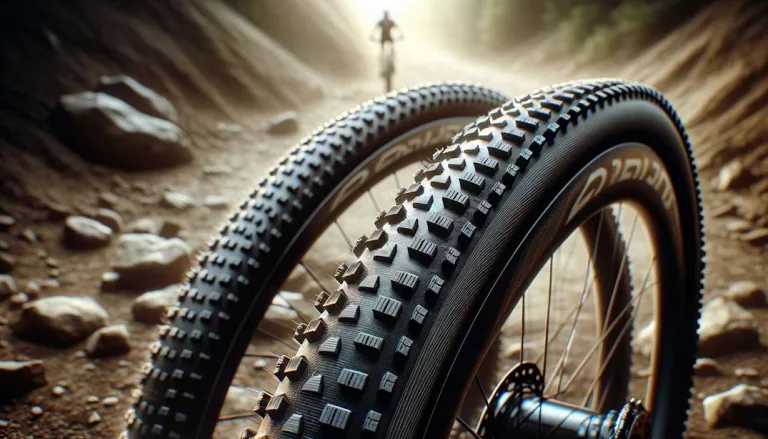The Evolution of Gravel Bike Design: A Journey Through Innovation and Adaptation
Key Takeaways
| Aspect | Details |
|---|---|
| Early Beginnings | Explore the roots of gravel bike design and its initial purpose. |
| Technological Advances | Delve into the technological innovations that shaped modern gravel bikes. |
| Design Enhancements | Understand the design changes for improved performance and comfort. |
| Future Trends | Anticipate the future directions of gravel bike design and technology. |
Gravel biking, a blend of road cycling and mountain biking, has rapidly evolved into a distinct and popular cycling discipline. This article explores the dynamic journey of gravel bike design, highlighting how innovation and cyclist needs have shaped these versatile two-wheelers.
The Genesis of Gravel Biking
Gravel biking’s inception can be traced back to cyclists seeking adventure beyond paved roads, leading to the creation of bikes that could handle mixed terrains. Early gravel bikes were often makeshift, adapted from existing road or mountain bikes. These adaptations laid the groundwork for a new type of bike, specifically designed for the demands of gravel paths and uncharted routes.
Technological Evolution in Gravel Bike Design
As the popularity of gravel biking soared, so did the evolution of its technology. Modern gravel bikes, such as those detailed in the ultimate guide to gravel bikes, showcase a remarkable blend of robustness, versatility, and comfort. Features like disc brakes and wider tire clearance, previously exclusive to mountain bikes, became staples in gravel bike design. These advancements provided enhanced control and stability, crucial for the unpredictability of off-road terrains.
Tires: The Foundation of Performance
The tire is arguably the most crucial element in gravel bike design. The best gravel bike tires of 2023 exemplify how tires have evolved from traditional road bike tires to wider, more durable options. These tires offer a balance between rolling resistance for speed and a tread pattern for grip, ensuring optimal performance on diverse surfaces.
Accessorizing for Efficiency and Comfort
As gravel bikes evolved, so did the range of accessories. Essential gravel biking accessories like ergonomic handlebars, suspension systems, and adaptable luggage solutions have become integral. These enhancements not only improve the ride experience but also cater to the practical needs of long-distance and multi-terrain cycling.
Tailoring Gravel Bikes for Every Rider
Gravel bike design has also become more inclusive, considering diverse rider needs. For instance, there are now specialized designs and gear tailored for women cyclists, as highlighted in women-specific gravel bike gear. This inclusivity ensures a comfortable and efficient ride for every cyclist, regardless of gender.
Frame Geometry: Balancing Comfort and Performance
Gravel bike frame design has undergone significant changes to enhance rider comfort without compromising on performance. The geometry typically features a longer wheelbase and a more upright riding position compared to road bikes. This design offers better stability and control on varied terrains, as elaborated in our comprehensive guide on gravel bike setup for beginners.
Revolution in Helmet and Lighting Design
Safety gear has kept pace with the evolution of gravel bikes. Modern gravel bike helmets are a fusion of road and mountain bike helmet features, providing ventilation, protection, and comfort. Likewise, gravel bike lighting solutions have advanced, offering robust, reliable lighting crucial for off-road adventures, especially in low-light conditions.
Suspension Systems: Smoothing the Ride
One of the most significant evolutions in gravel bike design is the integration of suspension systems. Initially absent in early models, suspension technology, as detailed in our article on gravel bike suspension, now plays a vital role in dampening vibrations and improving comfort on rough terrains. This addition marks a significant shift towards enhancing the off-road capability of gravel bikes.
Bike Packing Systems: Gear for the Long Haul
The rise of bikepacking has influenced gravel bike design, leading to the development of specialized bike packing systems. These systems are designed to carry gear efficiently without impacting the bike’s handling, crucial for multi-day adventures across varied landscapes.
Embracing High-Tech Gadgets
Gravel biking isn’t just about the bike; it’s also about the gadgets that enhance the experience. The latest high-tech gravel biking gadgets include GPS devices, advanced cycle computers, and even smart clothing. These gadgets offer cyclists data-driven insights and added convenience, revolutionizing the gravel biking experience.
Affordability and Accessibility: Budget-Friendly Options
Recognizing the growing demand for gravel biking, manufacturers have also focused on offering budget-friendly gravel bikes. These models make gravel biking more accessible, ensuring that enthusiasts of all levels can enjoy the sport without a hefty price tag.
Anticipating the Future: Where Gravel Bike Design is Headed
The evolution of gravel bike design is far from over. As cycling technology advances, we can expect even more innovative features and designs that push the boundaries of what’s possible in gravel biking. Here’s a glimpse into the potential future of gravel bike design.
Integration of Advanced Materials
The quest for lighter, more durable materials is ongoing. Future gravel bikes might incorporate new alloys or carbon fiber composites, offering unprecedented strength-to-weight ratios. This could lead to lighter bikes that don’t compromise on durability, perfect for the rigors of gravel biking.
Electronic Shifting and Smart Features
Electronic shifting systems, already popular in high-end road bikes, could become more prevalent in gravel bikes. Additionally, smart features like integrated sensors and connectivity with cycling apps could offer enhanced ride analytics and customization, as seen in some of the latest gravel biking gadgets.
Sustainable and Eco-Friendly Designs
Sustainability is a growing concern in all industries, including cycling. Future gravel bikes may incorporate eco-friendly materials and manufacturing processes, aligning with the environmentally conscious ethos of many gravel bikers.
Customization and Personalization
With advancements in manufacturing technology, we might see more opportunities for customization. Riders could tailor every aspect of their gravel bikes, from geometry to color schemes, ensuring a bike that’s truly their own.
Enhanced Comfort and Ergonomics
Ergonomic design will continue to be a priority, with advances in seat, handlebar, and frame design to reduce fatigue and increase comfort on long rides. This could also include adaptive suspension systems for better performance on varied terrains.
Gravel biking has come a long way since its inception, and the journey is just as exciting as the destinations it takes us to. From its roots in makeshift adaptations to the cutting-edge technology of today, gravel bike design continues to evolve, driven by the passion and needs of the gravel biking community.








2 Comments